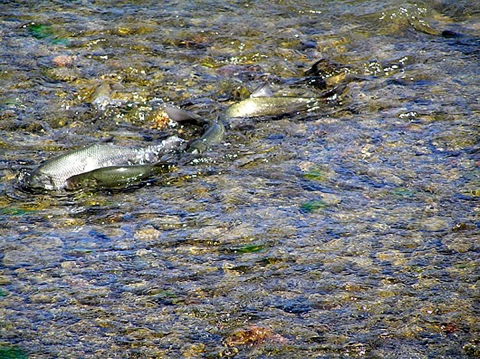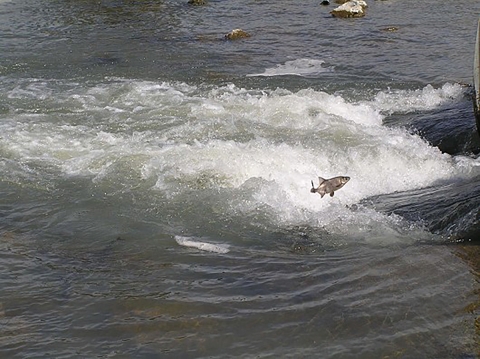This week, the U.S. Fish and Wildlife Service will join local tribes, government officials and other interested organizations to review new survey data on the Clear Lake hitch and discuss ways to improve population numbers.
The Clear Lake hitch is one of the largest members of the minnow family, reaching nearly 14 inches in length and weighing more than 16 ounces. Found only in the lakes and tributaries around Clear Lake in northern California, including Thurston Lake, the fish was once reported to be so plentiful that people could walk across creeks on the backs of the fish. The hitch is an important part the culture and diet of local Tribes. However, recent surveys of the fish in Clear Lake are showing a declining trend.
“Even though the hitch is not listed as threatened or endangered at the federal level, the Service is committed to helping this species recover now. We are actively working with local partners and scientists to gather more data on the hitch and the reasons for its decline,” said Amber Aguilera, Listing and Classification supervisor in the Service’s Sacramento Fish and Wildlife Office.
Since 2018, the Service has been part of a coordinated effort to develop a conservation strategy for the species, which addresses the issues that are impacting the Clear Lake hitch and the watershed. The team developing the strategy includes many local Tribes; government agencies at the local, state, and federal levels; several consultants; and other local organizations. The current version of the conservation strategy—although still a draft—has identified goals, objectives and actions that are needed to recover the species and improve its habitat. Because these actions have been identified, the draft strategy is already helping secure funding for several important restoration projects.
“The Service views this conservation strategy like a recovery plan, and we intend to complete and implement the strategy alongside our partners regardless of the species’ federal listing status,” said Aguilera.
Decades ago, mining in the area degraded creeks that run into Clear Lake. The hitch relies on these creeks for spawning in the late winter and early spring months. Recent droughts reduced the amount of water in these creeks, causing even more challenging spawning conditions for the fish.
Jerrod Sellers, a biologist in the Sacramento Fish and Wildlife Office, recently visited with biologists from the Robinson Rancheria of Pomo Indians of California to coordinate on their Clear Lake monitoring and restoration projects. Using funding secured through the Service’s Tribal Wildlife Grant program, the projects focus on identifying and addressing issues leading to the decline of the fish in the Clear Lake basin.
"By working hand-in-hand with our Tribal partners, we can identify ways to bring the hitch back to sustainable population levels," said Sellers. “We look forward to supporting the Tribe’s efforts to continue and expand their hitch monitoring program.”
Success of each spawning season is assessed not only with visual surveys at the creeks, but also through in-lake surveys funded by the Service and completed by the U.S. Geological Survey. The in-lake surveys catch hitch from a fishing boat, measure the length and weight of each fish, and then release them back into the lake. Older fish are larger, so scientists hope to catch a mix of large and small hitch, which would show successful recruitment of younger fish into the main population living in the lake.
“The in-lake survey data has shown a decline in the population, but other available survey data has been variable year-to-year,” said Aguilera. “By funding these surveys, we hope to gather enough data to make a well-informed assessment of the species population by 2025.”
The Service is scheduled to re-evaluate the species status and issue a 12-month finding in January 2025. The last assessment completed in 2020 resulted in the Service determining that listing the Clear Lake hitch was not warranted at that time. In addition to the population living in Clear Lake, there are other populations of the fish living in the watershed, including nearby Thurston Lake and possibly the Blue Lakes. All populations are taken into account for the species status assessment.
“We will continue to work with partners on finalizing the conservation strategy for the species and provide grants that support habitat restoration and research projects. We’re all-in on helping this species,” said Aguilera.






